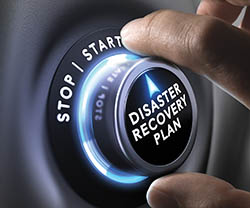
t's hurricane season - just one of several weather emergencies companies may face, depending on location. Tornadoes, floods and wildfires also pose serious threats. According to the Federal Emergency Management Agency (FEMA), about 25% of businesses never reopen after a major disaster. And many that do reopen struggle to recover.
To lower the risk of closure and improve your chances of a strong recovery, establish a comprehensive emergency plan before disaster strikes. FEMA recommends the following multistep approach to help safeguard your business.
Set goals and assign responsibility
Start by carefully defining the goals of your disaster plan and identifying who'll create, manage and execute it. Your priorities will likely include:
- Protecting employees and customers,
- Minimizing damage to assets, and
- Resuming operations as quickly as possible.
For legal and financial risk management, consider adding an attorney and an insurance professional to your team.
Craft your plan
Begin by identifying and prioritizing the risks your business may face. These will likely include physical injuries to employees or customers. Also important to consider are business interruption, revenue loss and damage to property, equipment, inventory or vital records.
Your plan should address:
Employee roles. Assign responsibilities to staff with relevant skills for different weather emergencies.
Evacuation procedures. Develop clear evacuation routes and protocols.
Safety equipment. Define needs for items such as first aid kits, fire extinguishers and sprinkler systems.
Data protection. Secure vital records and documents by means such as remote backups and physical copies.
Communication strategy. Establish how you'll keep employees and customers updated as to status and recovery timeline.
Inventory and supplier list. Keep a current list of critical equipment and replacement suppliers.
Operational continuity. Create contingency plans to run essential functions remotely with a minimal team.
HR and payroll policies. Set guidelines for compensating nonexempt employees who can't work during downtime.
Keep your plan thorough but manageable to ensure it's practical, updatable and easy to follow.
Put the plan to work
To implement your plan, inform employees of their roles, assign responsibilities and provide any necessary training. Ensure that all essential emergency equipment is readily available and that your insurance coverage is sufficient to meet your needs.
Identify possible infrastructure gaps and address them promptly to ensure safety. An example would be inadequate emergency exits.
Do run throughs
Regular practice strengthens preparedness. Conduct drills to ensure safe evacuation procedures are clear and compelling. Verify that safety equipment, data backups, and other safeguards function as intended.
Be proactive. Don't wait for a real emergency to discover weaknesses.
Assurance
Your business may never be directly impacted by a severe weather event. But having a solid emergency preparedness plan can still offer tangible benefits, such as lowering certain business insurance costs. More importantly, it brings peace of mind that allows you to stay focused on running and growing your business, rather than worrying about the possibilities. Contact your professional advisors for guidance tailored to your situation.
Sidebar:
Monitoring and tweaking
With a solid plan in place, relax, but not too much. Review and update your plan at least annually to reflect changes in staff, operations or layout.
Incorporate feedback from various sources, such as test results, employee input and new risks you've discovered or lessons learned. Adapting and refining your plan regularly will maintain its effectiveness and help keep your assets, especially your human assets, safe over time.
